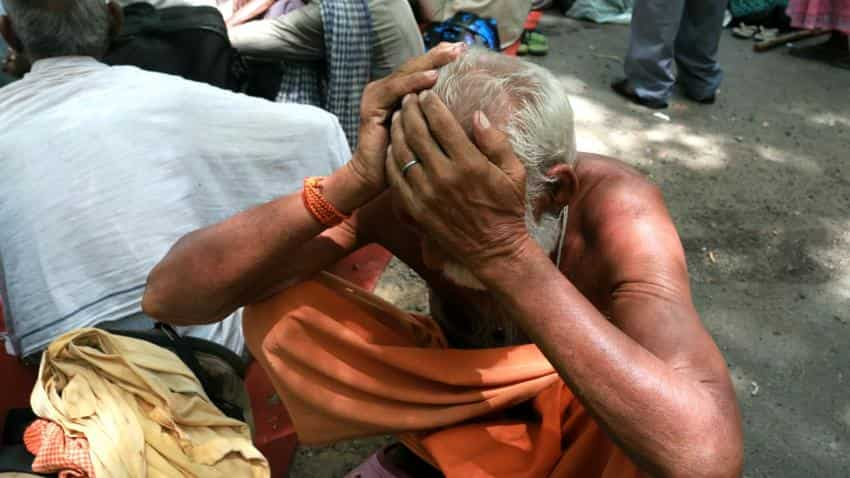Despite robust production, farmers suffer wage cut on food price deflation

Key highlights
- The food & beverages index of the CPI recorded a mild YoY deflation of 0.2% in May 2017, driven by the sharp disinflation for pulses & products.
- Area sown under pulses increased by 29.1% in the kharif season and 11.1% in the rabi season.
- Production of pulses rose to an all-time high of 22.4 MMT in FY2017, from 16.4 MMT in FY2016.
Vegetable prices have nearly halved in the vendors market and this is not another sale attributed to the impending transition to the Goods and Service Tax (GST) regime.
The lowering of food prices or deflation has occurred despite robust production and while this may be a positive to consumers it is taking a toll on farmer incomes.
“The deflation in vegetables and pulses is worrisome, as remunerative prices are necessary to sustain farmers’ interest in growing such crops. The recent dip in prices may dissuade widespread sowing of such crops in the upcoming kharif season,” Aditi Naya, Mukul Gupta and Medha Sinha, analysts of ICRA said in a report on June 19.
Wholesale prices of tomatoes, potatoes and onions were lower than the year-ago levels by 44.0%, 29.7% and 15.0%, respectively, in May 2017, the report added.
And wholesale price of Arhar and Urad declined by 44.1% and 40.1%, respectively, on a YoY basis in May 2017.

As farmers responded to the rise in minimum support prices last year, which is the minimum price set by the government at which farmers can expect to sell their produce, the area sown under pulses increased by 29.1% in the kharif season and 11.1% in the rabi season, ICRA report said.
“Production of pulses rose to an all-time high of 22.4 MMT in FY2017, from 16.4 MMT in FY2016,” ICRA added.
The report said there was a ‘record-high’ output of several crops in FY17.

However, over 80% of farm produce was not purchased under MSPs, a report by Indian Express said on Monday. It further added that over two-thirds of all crops are selling below the MSP or much lower than previous years.
In spite of Prime Minister Narendra Modi’s plan to double farmer’s income by 2022 the average income of farmers in India still remains at the Rs 6000 mark, Ministry of Agriculture said in the 2016 Parliament session.
Also Read: Indian farmers average monthly income just over Rs 6,400
Trends in Consumer Price Index (CPI) inflation of vegetables and pulses have been lower than its preceding years.
CPI eased to a series-low 2.2% in May from 3% in April.
“The most recent CPI and WPI data revealed a broad-based dip in inflation driven in large measure by the record crop output in the previous year and a rather unseasonal weakness in prices of perishables,” ICRA said.

Other factors have also led to sharp decline of food prices. “Such factors include the widespread public procurement being limited to a few crops, lack of adequate storage facilities for perishable items, and a ban on exports of some items combined with continuing imports,” the report said.
“The sharp rise in the availability of pulses in the domestic market in FY2017 relative to the previous year, has precipitated the drop in prices,” ICRA said.

Demonetisation also has led to price deflation.
“Following the note ban, cash liquidity is relatively lower than in earlier years. Various reports suggest that this appears to have reduced the bargaining power of the farmers who grow perishable items, contributing to distress sales of vegetables to middlemen at un-remunerative prices, particularly given the absence of adequate storage facilities and cold chains,” the report added.
Macroeconomic backlash
The backlash on macroeconomic trends from lower farmer sentiment on the back of deflation and a normal monsoon could push farmers to sow more water-intensive crops instead of kharif.
“The recent dip in prices may dissuade widespread sowing of pulses in the upcoming kharif season,” ICRA said.
Farm loan waivers on the back of increased call for help from farmers will worsen the fiscal deficit. Punjab has become the third state to offer up to Rs lakh total waiver of crop loans after Maharashtra and Uttar Pradesh.
“While such loan waivers may give a temporary relief to the farmers and boost rural consumption, funding of the same would likely worsen the fiscal deficit and leverage levels of the state governments, unless additional resources are mobilised or other expenditure is controlled,” ICRA said.
Get Latest Business News, Stock Market Updates and Videos; Check your tax outgo through Income Tax Calculator and save money through our Personal Finance coverage. Check Business Breaking News Live on Zee Business Twitter and Facebook. Subscribe on YouTube.
RECOMMENDED STORIES

Looking for short term investment ideas? Analysts suggest buying these 2 stocks for potential gain; check targets

Small SIP, Big Impact: Rs 1,111 monthly SIP for 40 years, Rs 11,111 for 20 years or Rs 22,222 for 10 years, which do you think works best?
12:36 PM IST










 Cabinet approves Rs 2,481 crore National Mission on Natural Farming
Cabinet approves Rs 2,481 crore National Mission on Natural Farming Govt to launch 'Kisan Ki Baat' to bridge farm-Science gap
Govt to launch 'Kisan Ki Baat' to bridge farm-Science gap Significant milestones expected as farmers adopt natural farming: PM Modi
Significant milestones expected as farmers adopt natural farming: PM Modi Gujarat to give 50% subsidy to farmers on Nano Urea and Nano DAP
Gujarat to give 50% subsidy to farmers on Nano Urea and Nano DAP PM Kisan Samman Nidhi 16th Installment: Yet to receive installment amount; here's how to check your beneficiary status in list
PM Kisan Samman Nidhi 16th Installment: Yet to receive installment amount; here's how to check your beneficiary status in list